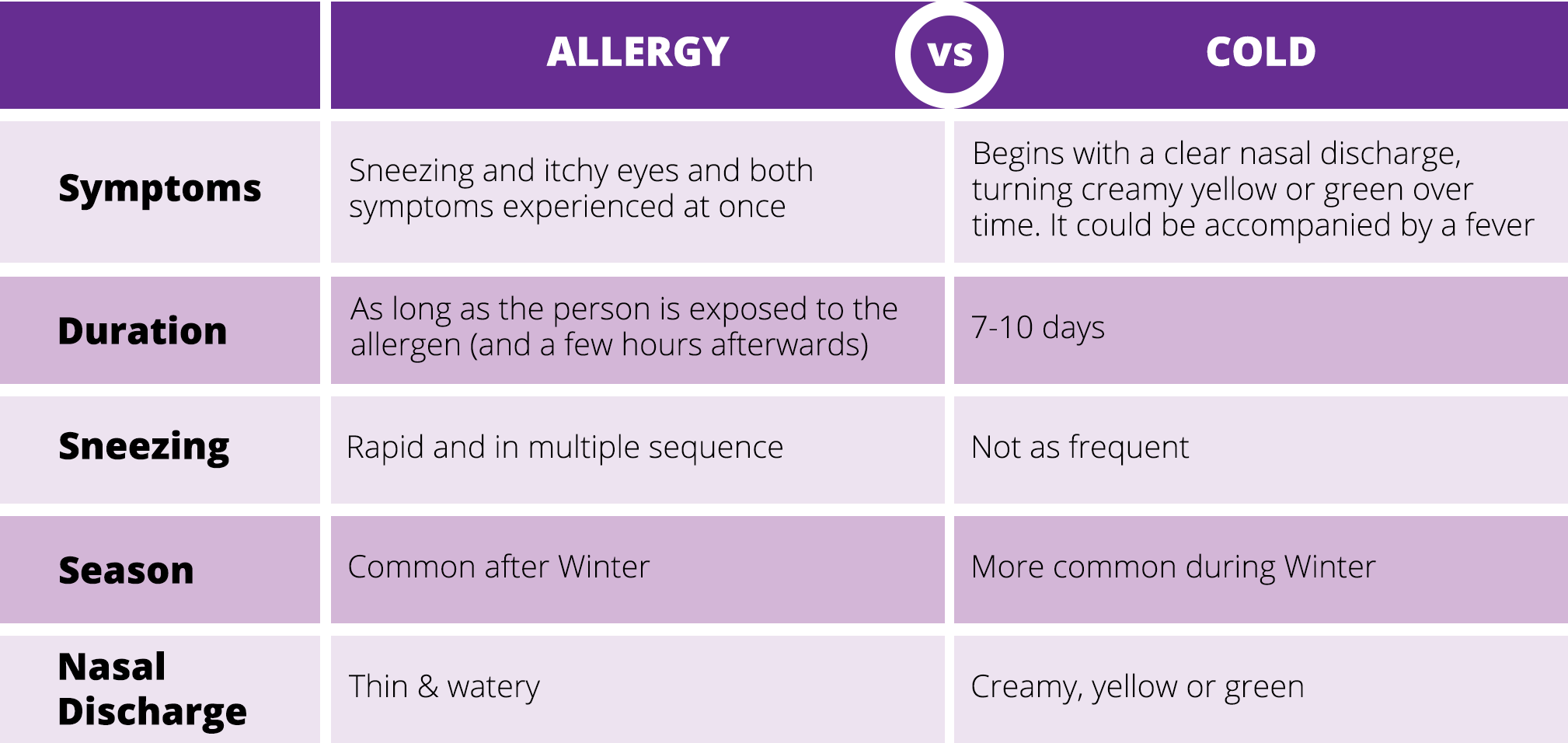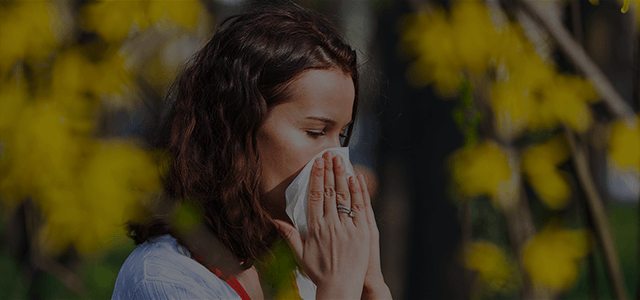Allergy Myths and Facts
No, they’re not the same! Often, they’re mistakenly interchanged. We’ll tell you the difference.


No, allergies are not harmless as such. While they may range from mild to severe, they are a serious problem and should not be ignored. Untreated allergies affect quality of life. Allergic rhinitis (hay fever) for example, results in poor quality sleep, fatigue and daytime sleepiness. Untreated allergies can also worsen other chronic respiratory problems such as asthma, sinusitis and skin disorders such as eczema and urticaria (hives). Some allergies to foods, drugs and insect stings can lead to a potentially life-threatening reaction called anaphylaxis.
That’s a little unlikely. In a pollen allergy, it’s not the pollen of flowers that are the culprit. Those are large and sticky, do not blow very far, and require birds and bees for pollination. Therefore, when people complain that scented flowers trouble them, it is usually due to chemical irritation from the perfume that makes them sneeze. The pollens made by trees, grasses, and weeds are usually to blame for pollen allergies, but there are some flowers that should be avoided.
If the kind of allergy you’re trying to escape is pollen, house dust mite, animal dander and mold spores, moving away from the source of allergen (like landlocked area to a coast) may temporarily relieve allergies. Unfortunately, allergic people are also prone to developing new allergies, and often symptoms reappear within a few years with exposure to new plants, or other sources of allergens such as molds or house dust mites. Certain allergens are more prevalent in certain regions, but it is said that allergy sufferers are predisposed to developing allergies regardless of their environment.
It’s not the fur but a specific protein produced in the animal’s skin and, to a lesser extent, urine and saliva. When you pet or brush them, or if the pet rubs up against furniture or people, microscopic flakes of skin (called dander) become airborne. However, since short-haired pets have less hair to shed, they send less dander into the air and are preferable for those with pet allergies.
Animal allergens, particularly cat and even horse allergens, can be carried on clothes. This may trigger a bout in people who do not have pets themselves but are still affected.
Restraining your diet to organic food is no guarantee that you'll avoid food allergies. In fact, some of the most allergenic foods are natural and unprocessed foods such as cow's milk, eggs, peanuts, wheat, soybeans, fish and shellfish.
There are ways to manage allergies, but unfortunately no cure for them. With appropriate diagnosis and management, however, most asthma and allergy sufferers will lead normal, active lives with just a little effort.
Allergies can unfortunately last for many years. Allergic reactions to cow's milk, soy or egg in infants often resolve by the time a child enters kindergarten, but others (such as peanut, or seafood) can persist for life.
Carpets, linens, upholstery, mattresses, etc. contain house dust mites and their allergenic fecal particles. Regular vacuuming and washing of these are recommended as that will reduce, though not entirely omit, the number of dust mites.
Environmental factors may be contributing to higher pollen levels, but that's only part of the picture. Genes have a role to play too. Researchers believe that the upside to this link could possibly help identify new therapies for allergic diseases.

